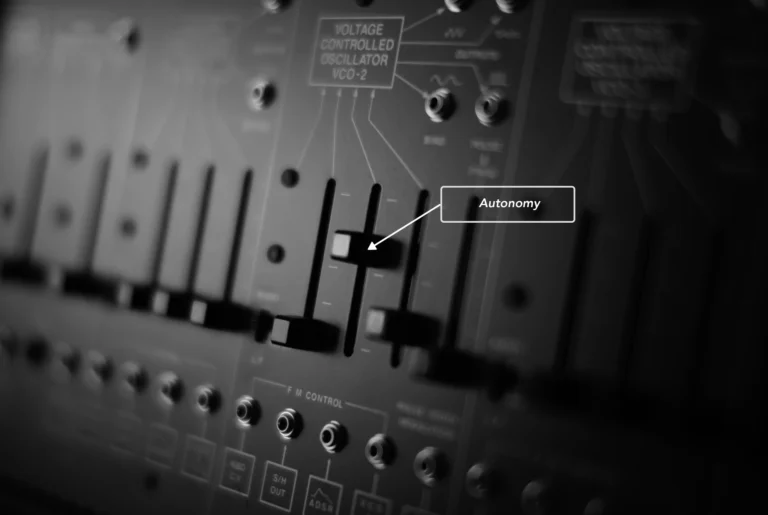2025 is closing in quickly, meaning it’s time again to take a close look at the robotics industry and make our predictions.
As we did for 2024, we’re taking our observations and lessons from this year to make a few predictions about what developments we may see in the next year. But first, let’s take a brief look at how last year’s predictions turned out versus reality.
Last year we forecasted a slow start for industry sales at the beginning of 2024, which turned out to be correct. Ultimately, the industry saw an eight percent decrease in North American robot sales in the first half of 2024. However, it’s important to note that this only reflects manufacturing robot sales as the total 2024 sales for mobile robots have not yet been recorded. Next, we speculated that generative AI will change the way we view robot data. Multiple robotics entities, including Formant, proved this to be true, from MIT utilizing gen AI to solve multistep robot manipulation problems to Formant releasing our new AI-powered Analytics feature.
We also discussed the rise of enterprise fleets, which has been reflected in large organizations adopting physical automation from warehouses to in-store experiences. Companies, including Schaeffler, Spanx, and Uber Eats announced robotics initiatives, with likely more enterprise companies to follow as automation becomes a necessity for keeping up with the competition.
Lastly, based on findings in our 2023 State of RaaS Report, we anticipated robotics companies would continue to be challenged in customer acquisition. Unfortunately, the industry did bid farewell to a few well-known robotics startups due to several reasons, from the inability to acquire larger customers to a lack of financial runway. However, investments in robotics, powered by excitement for Humanoids and AI, neared all-time highs last seen in 2021 and signal an easier path to success for robotics startups next year.
There was plenty more that happened in 2024 than we can cover here, but we’re more excited to discuss next year’s trends. We have insights from what we learned this year, plus from one of our partners, Slalom, so let’s dive in!
The world “gets real” about AI
To no one’s surprise, AI dominated headlines in robotics this year. The hype around artificial intelligence reached a fever pitch, with promises of revolutionary changes across industries. As we move into 2025, understanding the large promises vs realistic applications is key.
Our CEO, Jeff Linnell, and Chief Architect, James Turnshek, recently featured in a webinar with The Robot Report where they discussed how to define the pragmatic vs the possible when it comes to AI. So, what can we expect to see in the near future for AI in robotics?
AI is currently accelerating capabilities in two key areas: enhancing robots’ abilities and improving data processing. While AI is already enabling more efficient analytics and operations for deployed robot fleets, James and Jeff shared they believe its full potential for task autonomy and complex orchestration is still emerging. AI is particularly valuable for robots operating in unstructured, ambiguous environments like agriculture and facility maintenance.
Looking ahead, we can expect rapid progress in AI-driven robotics over the next few years, with impressive demos showcasing new possibilities simultaneously. However, it’s important not to be misled by this. Real-world adoption will depend on reliability and cost-effectiveness for specific applications. Jeff is traditionally cautious about the pace of robotics advances, but he views AI as a “game changer” that will accelerate robotic progress.
“I’m not prone to hyperbole, but I think this is actually a completely new era. There’s a tremendous acceleration to the applicability of robots. And I think we’re going to see an explosion of things getting done with machines,” said Linnell during the webinar. “There’s a renewed interest in financing and robotic startups, and that’s encouraging, but I think it’s largely driven by what we see as possible through AI.”
For now, the emphasis will be on practical implementations that enhance robot performance, efficiency, and ROI rather than flashy but less immediately useful AI capabilities.
Large-scale enterprise fleets meet integrators
As mentioned above, 2024 was a strong year for enterprise robotics, as we saw many large companies welcoming physical automation into their operations. However, there are still significant challenges facing teams who seek to bring robots into the mix. Tradition often trumps innovation due to the common fear of disrupting processes and integrating an entirely new technology across a large organization. This is an understandable difficulty, though we see an early trend that signals how enterprises may curtail these issues by partnering closely with robot integrators.
Rather than attempting to implement and manage complex robotic systems in-house, specialized integrator companies are an attractive and cost-effective option to accelerate the process.
With their expertise across multiple robot vendors and types, integrators are uniquely positioned to offer enterprises a comprehensive automation solution. These companies can curate the ideal mix of robots for each specific environment, whether it’s a sprawling warehouse, a busy hotel, or a chain restaurant, such as Walmart’s partnership with RichTech Robotics to power in-store ghost kitchens. By leveraging various robot types from different OEMs, integrators can create a versatile fleet capable of efficiently handling a wide array of tasks.
Swarm robots and fleet management
Don’t just take our word for what’s coming in 2025- Chris Thomas and Justin Tormey at Slalom Element lab212 in New York City predict a significant shift towards swarm robotics and more sophisticated enterprise fleet management systems.
“Robots will be smaller, more purpose-built for individual tasks while operating as a fleet,” said Tormey. “This trend aligns with the principles of collaborative specialization, allowing for greater efficiency and flexibility in robotic deployments.”
This approach of operating a swarm of robots with each unit designed for a specific task may enable a more granular and adaptable robotic workforce capable of tackling a diverse array of tasks with greater agility than some of the larger, more generalized robots we see today.
Thomas further anticipates that, “Agentic AI systems will oversee these swarms of robots. This Agentic intelligence will act as a conductor, orchestrating swarms of robots by providing guidance and optimizing operational efficiency.” Such a system could coordinate the actions of numerous specialized robots to achieve complex, multi-step objectives that were previously challenging or impossible.
One of the most promising aspects of this predicted system is its potential for flexibility and resilience. As each small robot would operate independently, it could be brought in and out of service without affecting the overall system. This approach could significantly enhance system reliability and simplify maintenance and scaling processes into 2025.
Translating robot data into business impact
Data has always been king, but now, stakeholders want more than data – they need to see tangible business value.
Return on investment (ROI) is the largest driver in the decision to bring robotics into an organization. Small robotics startups, all the way up to Innovation teams in enterprises, face the question of whether a robot can provide true value or if it’s just a costly experiment. This shift will push robotics companies to not only innovate technologically but also to think more critically about the business impact of their solutions.
In response to this challenge, we expect to see more sophisticated ROI modeling tools to support enterprise teams looking to gain executive buy-in. Formant is at the forefront of addressing this critical need with Formant Analytics, released earlier this year. With Analytics, companies are empowered to easily collect, visualize, and analyze data from their robots, providing insights that demonstrate ROI and tell a compelling, data-driven story about the value of their robotics initiatives.
Whether you’re a startup, an enterprise, or somewhere in between, staying ahead of these trends will be crucial for staying competitive in robotics in the coming year. We wish everyone a successful 2025; stay tuned with more insights as the year progresses on our blog, or follow us on LinkedIn.



